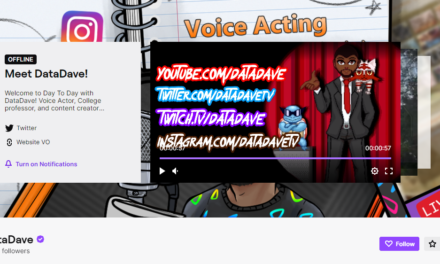Today, any company worth its salt is stepping in front of the lens and clicking the Record button. When it comes to marketing in 2015, video is the undisputed king among consumers. Case in point: More than 70% of marketers say video generates conversions better than any other type of content, per survey data, sponsored by Vidyard, in Demand Metric’s August 2014 report, “Video Content Marketing: Identifying Metrics & Measuring Impact.” But with increasingly shorter audience attention spans, many content providers are veering away from extended play clips and relying more on short-form videos to build a customer base and push brands, products, and services.
“Short-form video content is popular because it delivers the message, evokes emotions and the urge to re-share it, and gives the opportunity to move onto the next piece of content quicker,” says Adam Mosam, founder and CEO of Pivotshare.
Brad Jefferson, CEO and co-founder of Animoto, agrees. “For consumers, watching a video brings a message and story to life and can give personality to a brand,” says Jefferson. “And for businesses, video production and distribution is getting less expensive, and major platforms are investing heavily in video.”
While it is widely thought that using short-form video is a great way to reach consumers, making money off it is an entirely different matter. If your video goes viral (as Charlie Bit My Finger-Again!, now viewed by more than 827 million, did shortly after its release in 2007), it’s practically a license to print money-provided you’ve properly monetized your short-form content.
The major challenge with monetization via advertisements is that viewers aren’t crazy about commercials, specifically preroll ads they’re forced to watch. Consequently, says Jefferson, content providers “need to be conscious of whether or not the ads are preventing people from actually making it to the viewing stage.”
Realistic expectations are in order here. “Depending on the platform, the advertiser, and how viewers are engaging with your video content, you may only make a few dollars for every thousand views,” cautions Jefferson. Although this can add up quickly if you’re creating a lot of content and getting plenty of views (some YouTube stars with millions of subscribers make six-figure incomes), the average content creator should probably only count on ad revenue as supplementary income.
Getting viewers to pay for video content-a la subscriptions, streamed or downloaded on-demand purchases, or rentals-is another oft-attempted monetization tactic. “There have been gamers who provide video walk-through instructions on video games who earn over $20,000 a year from subscribers to their content,” says Anish Patel, founder and head producer of Revolution Productions. However, short-form video creators should expect to convert only 2% to 5% of their online audience into paying subscribers, including their social media following, insists Mosam.
Despite these challenges, many believe that monetizing short-form video is worth it because the content “can live in many different places-not just on the content provider’s main website or blog-and be monetized in many of these places,” says Jefferson.
Realistic expectations are ?in order here.
Monetization success requires the right strategies coupled with careful planning. Experts suggest the following tips:
- Offer valuable content. “Short-form video content can be fun and entertaining, but it should also provide worthwhile insight to generate profit,” notes Mosam.
- Offer content of high technical quality. “Short-form videos that are professionally made are more likely to be monetized because those are the videos people want. Pay attention to sound quality, image resolution, and script,” Patel says.
- Offer ample content. Whether you are charging for a subscription or relying on preroll ads as your monetization strategy, you need to ensure that there are a good number and variety of videos available to your customers. “Consumers love binge watching, so there needs to be a large supply of fresh content being uploaded periodically,” Mosam adds.
- If you are allowing ads, opt for TrueView-type ads. “These are the ads that play for 5 seconds and then allow viewers to skip,” Jefferson says. “Many viewers, when faced with a 15-30-second ad they are forced to watch will never make it to your actual content.”
- If you choose to sell videos via subscription/purchases, “offer flexible and fluid pricing and choose a proven and secure payment service provider,” recommends Benedicte Guichard, senior marketing director for Cleeng, based in Amsterdam.
- Avoid intrusive monetization schemes. “Your monetization approach should be embedded into the content itself,” says Chad Dunavant, VP of product management for CSG International. “With short-form content, consumers will not stay engaged if they have to enter credit card information.”
- Explore other creative ways to monetize. Perhaps a relevant brand may be willing to sponsor your content, or you can experiment with a freemium model (offering some content gratis, upfront, and then asking viewers to pay for full access to unlimited content).
- Be sure your videos are discoverable by optimizing titles, tags, and descriptions. “The more people who are able to find your video, the more money you’ll be able to make,” notes Jefferson.
Additionally, consider collaborating and developing profitable partnerships with other video providers as well as affiliate partners. “It’s challenging enough for one creator to produce enough hours for one subscription video channel,” notes Mosam. “When creators collaborate, more content is produced, larger audiences are reached, and higher levels of income are made from a larger pie.” Partnering with an affiliate can be another great revenue stream. “If you have a big audience and you find someone whose videos would be appealing to that audience, you can promote them and cut yourself into their profit-sharing,” Patel says.
Lastly, ensure quality of service and quality of experience with your short-form clips. “One bad experience with short-form content-including buffering, slow response times, or a slow checkout process-can lose a consumer’s attention,” Dunavant says. In fact, seamless delivery may be the most important aspect that affects your success as a video content publisher.
“End users will pay for quality, issueless content, and they expect nothing less than that,” says Guichard. “To reach that quality level, publishers need to perform scalability and performance tests prior to distribution and make sure all the technical aspects-such as hosting, encoding and encryption-are well-set-up.”
To help matters here, “use a top-tier platform or network that leverages a world-class content delivery network to keep your videos looking great,” adds Mosam.
(Images courtesy of Shutterstock.)






